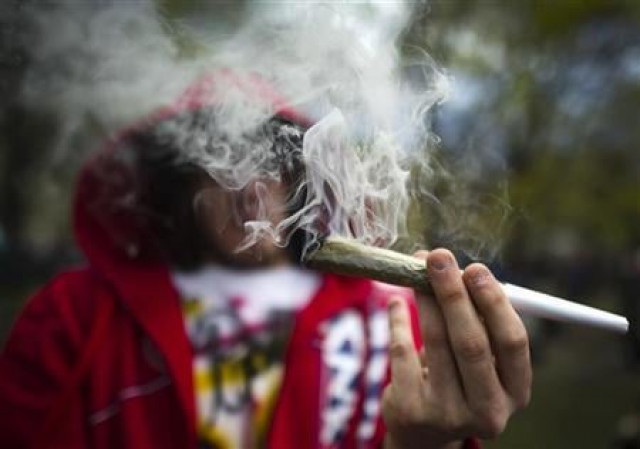Canada urges youth: 'Don't drive high'
Last year there were 3,098 road incidents involving drug impairment

A man smokes a large joint before The Global Marijuana March in Toronto. PHOTO" REUTERS
As with drunk driving, the government said it would crack down on motorists under the influence of narcotics, in particular marijuana.
As Canada prepares for legal pot, ex-cops get into the business
In the meantime it is hoping that television spots and advertisements in movie theatres, newspapers and on social media will help to dispel myths that driving after smoking a joint is somehow safer than driving drunk.
Recreational use of cannabis becomes legal on July 1, 2018. It is currently only legally available for medicinal use with a prescription.
Public Safety Minister Ralph Goodale noted that half of youth aged 16 to 24 believe that driving while under the influence of cannabis is somehow "more socially acceptable" than driving while affected by alcohol.
"Too many people downplay the potentially deadly risks of driving high," the minister said.
"With this new campaign," he said, "we will help Canadians, and especially youth and their parents, understand how your life can change in an instant when you drive high."
According to government figures, drug-impaired driving has been on the rise in Canada since police-reported data became available in 2009.
Nearly one-quarter (22 percent) of youth who used cannabis said they drove while drug-impaired, and one in three reported having ridden in a vehicle operated by a driver who was under the effects of cannabis.
Sex and drugs: Study links marijuana use to more intercourse
Last year there were 3,098 road incidents involving drug impairment, up 11 percent from the previous year.
The percentage of Canadian drivers fatally injured in a car crash who tested positive for drugs (40 percent) now exceeds that of drivers who tested positive for alcohol (33 percent).



















COMMENTS
Comments are moderated and generally will be posted if they are on-topic and not abusive.
For more information, please see our Comments FAQ